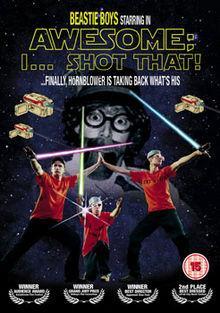“Good enough,” is not a phrase usually heard in the corridors of broadcasters unless it’s following the words “that’s not”, writes John Maxwell Hobbs.
Broadcasters have prided themselves on delivering a superior product, and continually upping the stakes – black and white to colour to HDR, mono to stereo to surround, SD to HD to UHD, tripods to cranes to choppers to drones, instant replay to slowmo, Astons to lower thirds, to augmented reality, and on and on.

The industry has followed the philosophy expressed in the phrase, “build a better mousetrap, and the world will beat a path to your door.” But with 4K sensors in smartphones; image stabilisation; inexpensive drones; low cost, high quality editing systems; and an increasing sophisticated world of amateur producers how do we define what exactly is “good enough?”
And in a world of choices between linear, PVR, VOD, OTT, and other acronyms, in which the CEO of Netflix has said that his company’s biggest competitor is sleep, is a better mousetrap the way to beat the competition?
After all, we’ve seen the fallout from the “sure things” of HD and VR. And, there are lots of areas of endeavour where “good enough” is actually good enough. Thus, the expression, “good enough for government work”.
The word “disruptive” is used promiscuously in business these days. It comes from a misreading of Clayton Christensen’s concept of disruptive innovation. This is unfortunate, because the most important element of Christensen’s theory is that of “good enough.”
In a nutshell, disruption in an industry occurs when a new entrant goes after the least profitable, low end of the market with a product that doesn’t meet the high standards of the incumbents and their more highly profitable customers. Over time, the new entrant’s product improves enough that it begins to take market share from the established players.
Based on this definition, contrary to conventional wisdom, Netflix is not a disruptor in the media industry, because their strategy is focussed on building a better mousetrap – well designed user interface, high budget productions, 4k and UHD streaming, machine learning to generate recommendations – rather than aiming for the overlooked low end of the market.
The real supporter of disruption is YouTube, with is mind-bogglingly ugly UI, lackadaisical quality control, hit or miss recommendation engine, and decidedly low-res streaming quality.
As a matter of fact, YouTube’s attempts to go after the high-end market dominated by linear broadcasters and VOD companies like Netflix, Apple and Amazon, have up until now, been remarkably underwhelming.
Arguably, YouTube succeeds not as a producer or even as a curator, but as a platform for the hosting of “good enough” work.
Does the video of the bulldog rocking out to Nirvana actually need to be in higher quality than 360p? Or would the 26 second clip of Slash messing up the intro to Sweet Child ‘o’ Mine be improved by expanding it into a 30 minute programme, shot in HDR?

The other key principle of Christensen’s disruption theory is that low end product offerings increase in quality over time, and begin to reach the quality desired by the mainstream, thus disrupting the business of the incumbents. This trajectory is evident in crowdsourced live concert films.
In a rather prescient move in 2006, the Beastie Boys released “Awesome, I …. Shot That!” a documentary of their performance in 2004 at Madison Square Garden.
Fifty fans were given camcorders and instructed to keep the camera rolling throughout the concert. The final film was assembled from the camcorder footage. The quality was limited by the low spec camcorders available at the time, but they allowed the film to be produced on an extraordinary low budget, particularly as all the camcorders were returned to the store the next day for a refund.

That approach has been used since then for a number of audience-created concert films, sometimes with the participation of the bands themselves. Radiohead provided an audio mix for a film shot by fans in Prague in 2009. The difference in image quality between the Radiohead and Beastie Boys films is significant, and turns it into something that is enjoyable for more than just hard-core fans.
On New Years Day, a concert by the The Cure, shot by audience members in 2016 was released on YouTube in 1080p HD.
According to the group of fans behind the project, nearly 1,000 people contributed videos and photos. Not only have portable cameras and camera phones improved in the seven years between the Radiohead and Cure productions, technologies for coordinating teams of people and exchanging massive numbers of media assets have been made available to the general. We are also starting to see professional production teams using these tools as well.
In the case of each of these productions, it’s clear that they are labours of love, aimed at a small but dedicated audience, but the thing to keep in mind is that the audience does not have the choice between a fan film and a professional production – their choice is between the fan film and nothing.
And a bare-bones mousetrap is better than no mousetrap at all.
As well as being a music producer and composer, John Maxwell Hobbs is CEO of music technology startup Delic, media consultant and the former Head of Technology at BBC Scotland.




























No comments yet